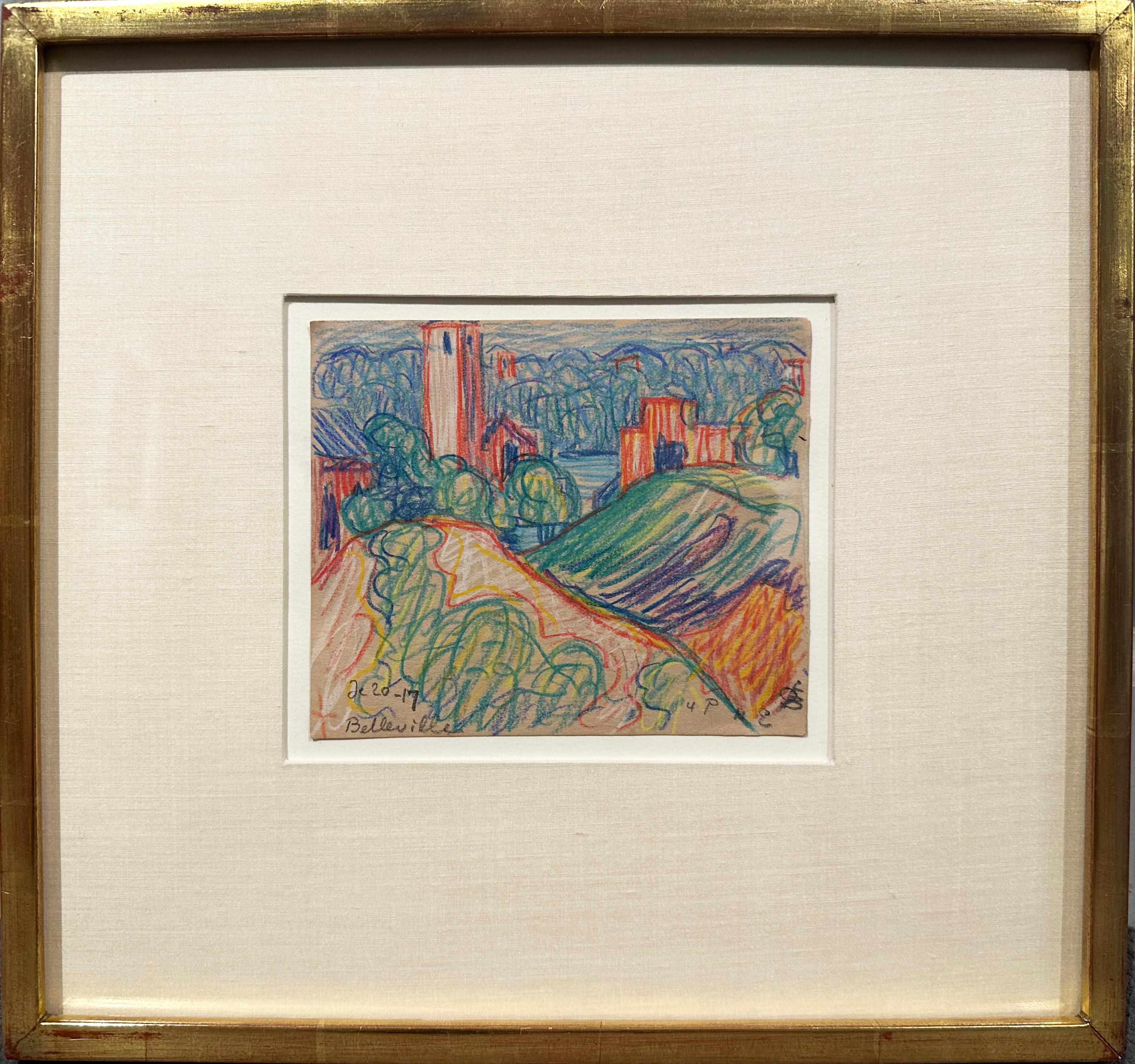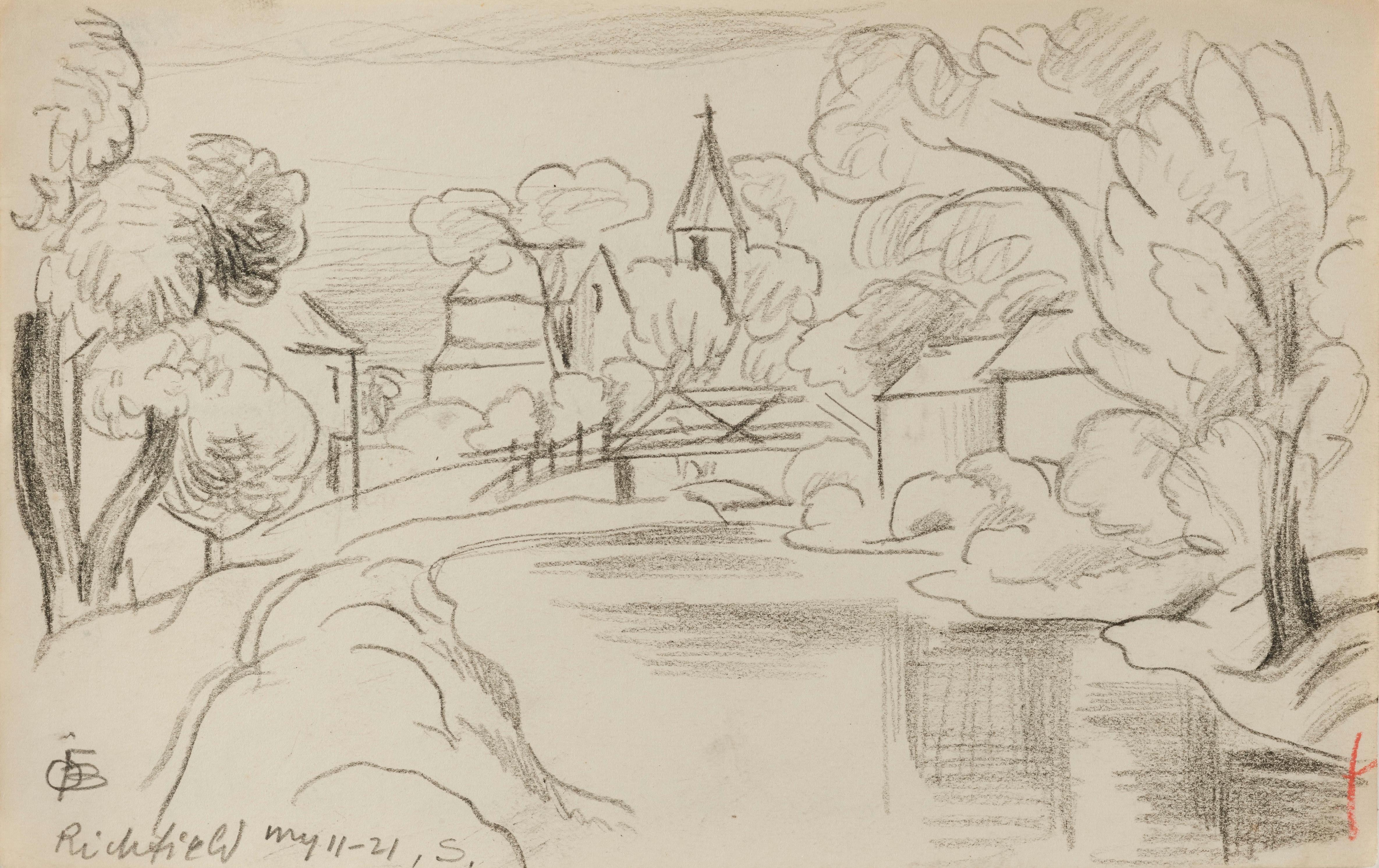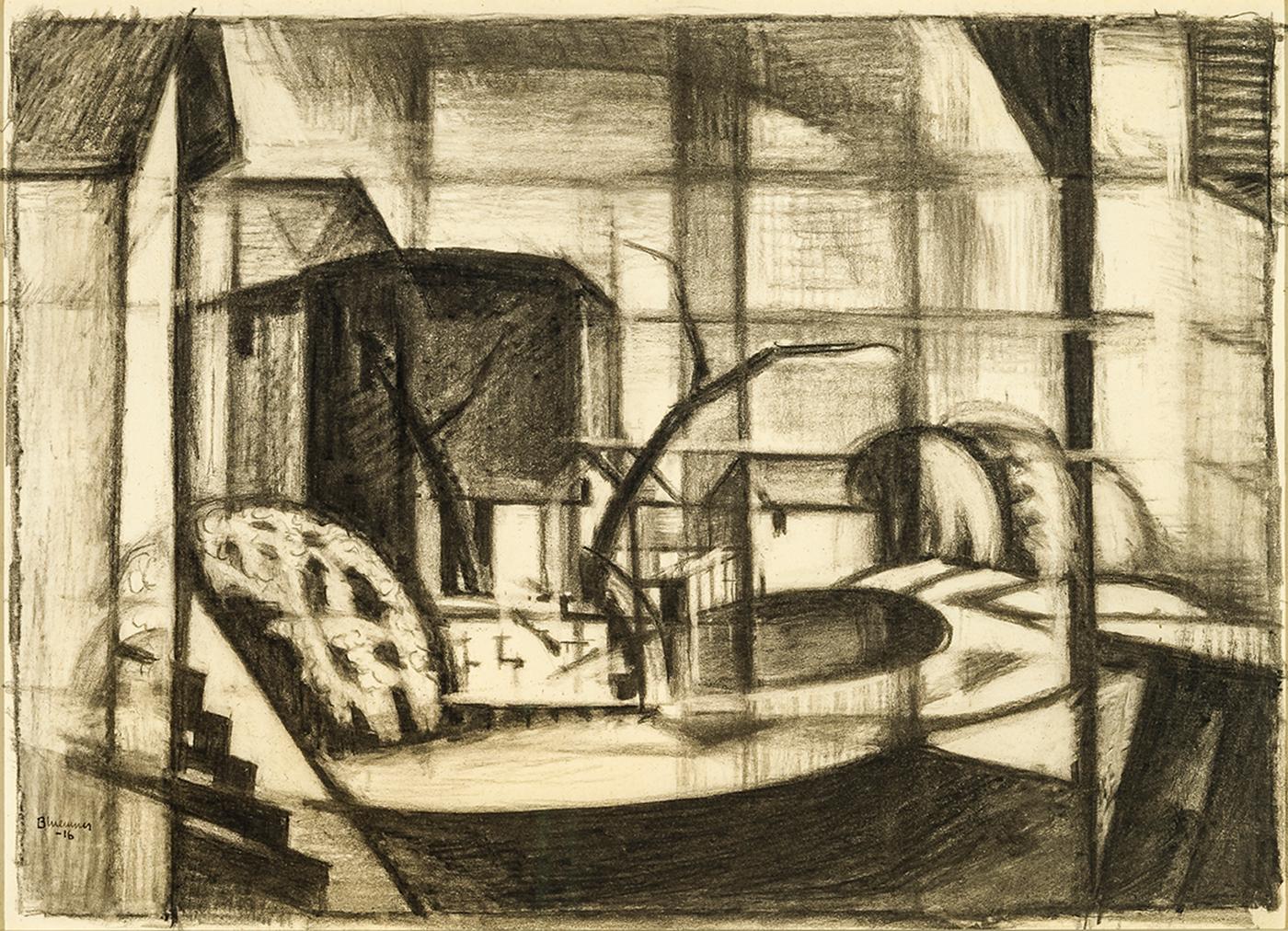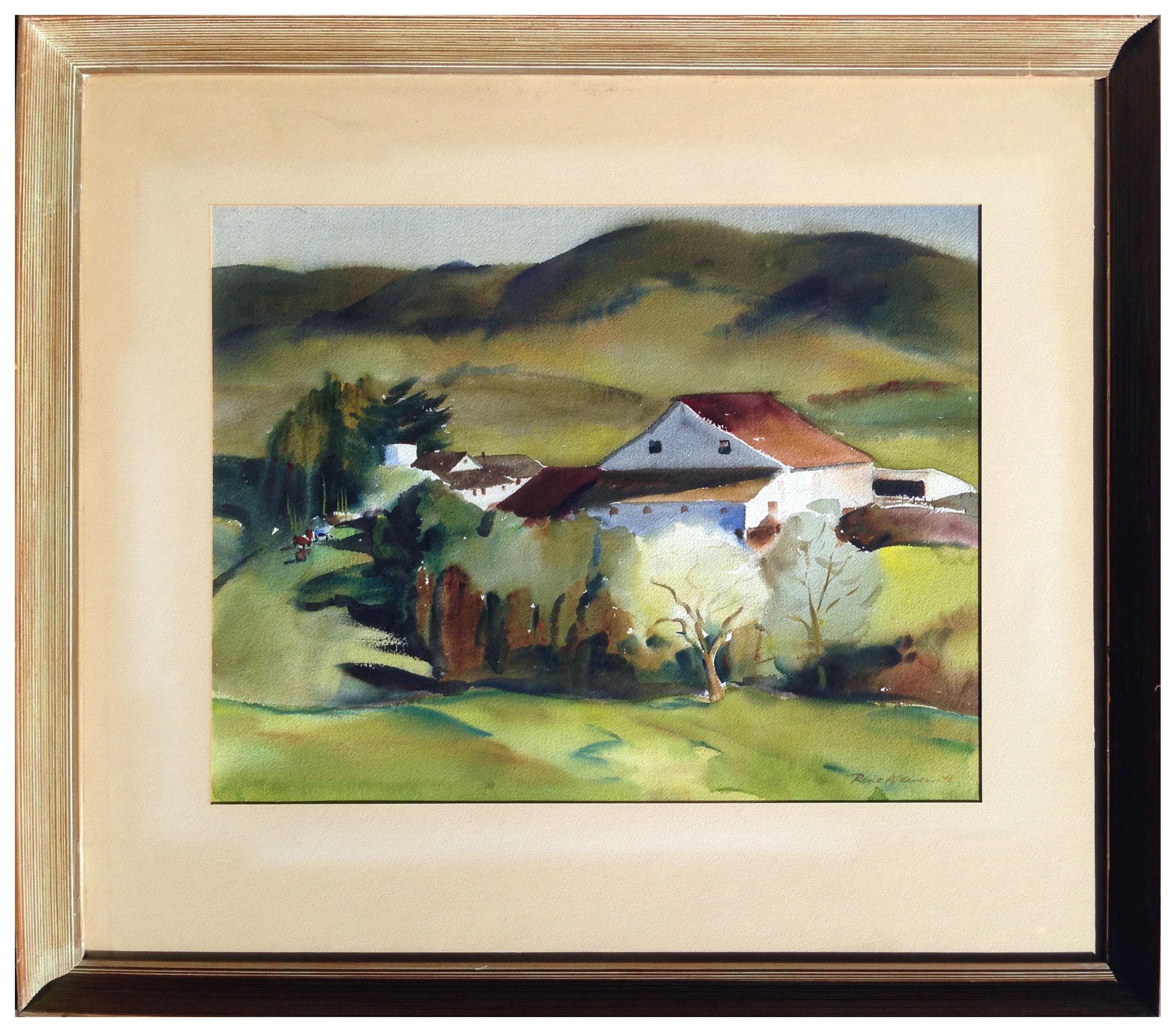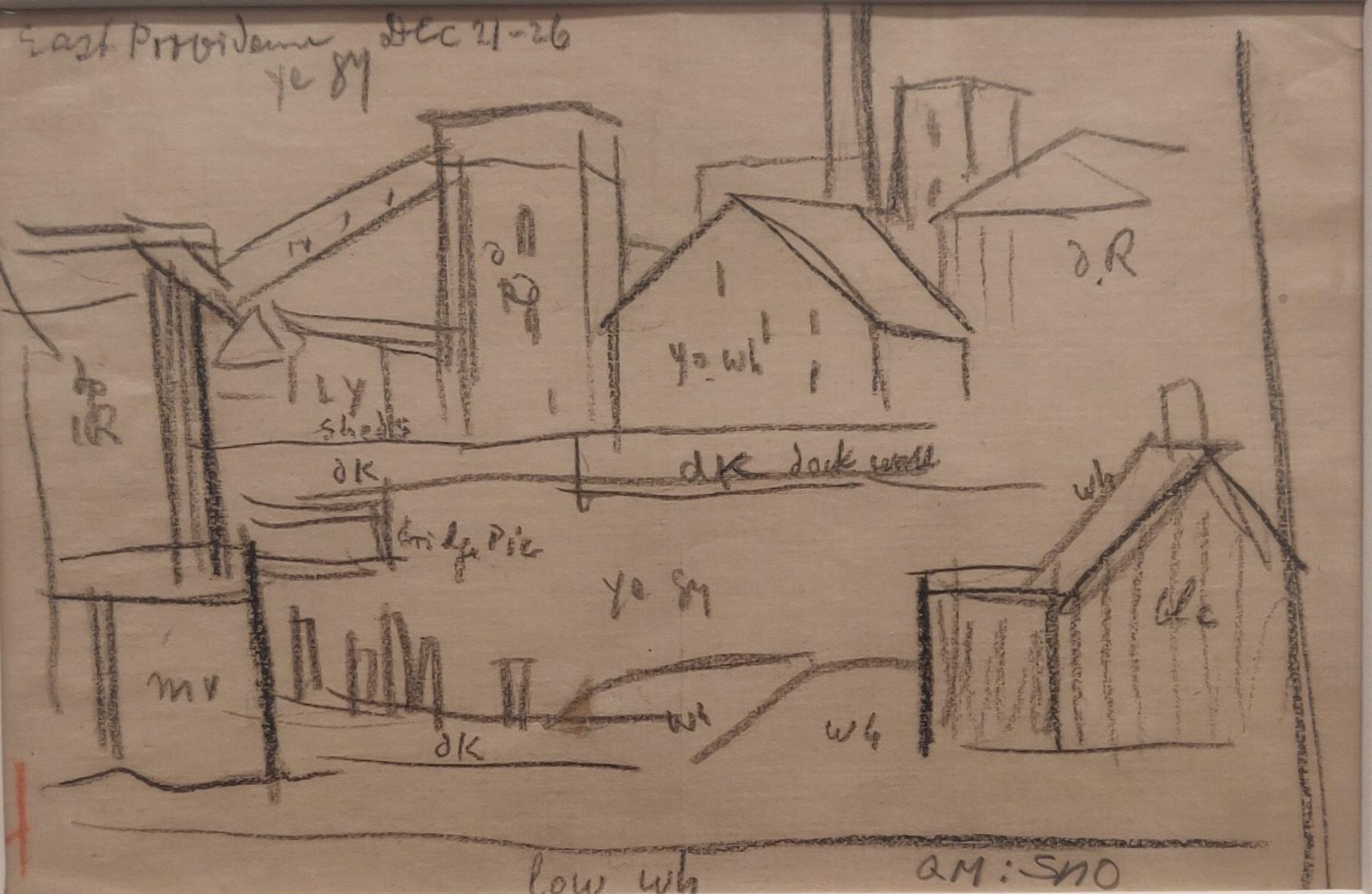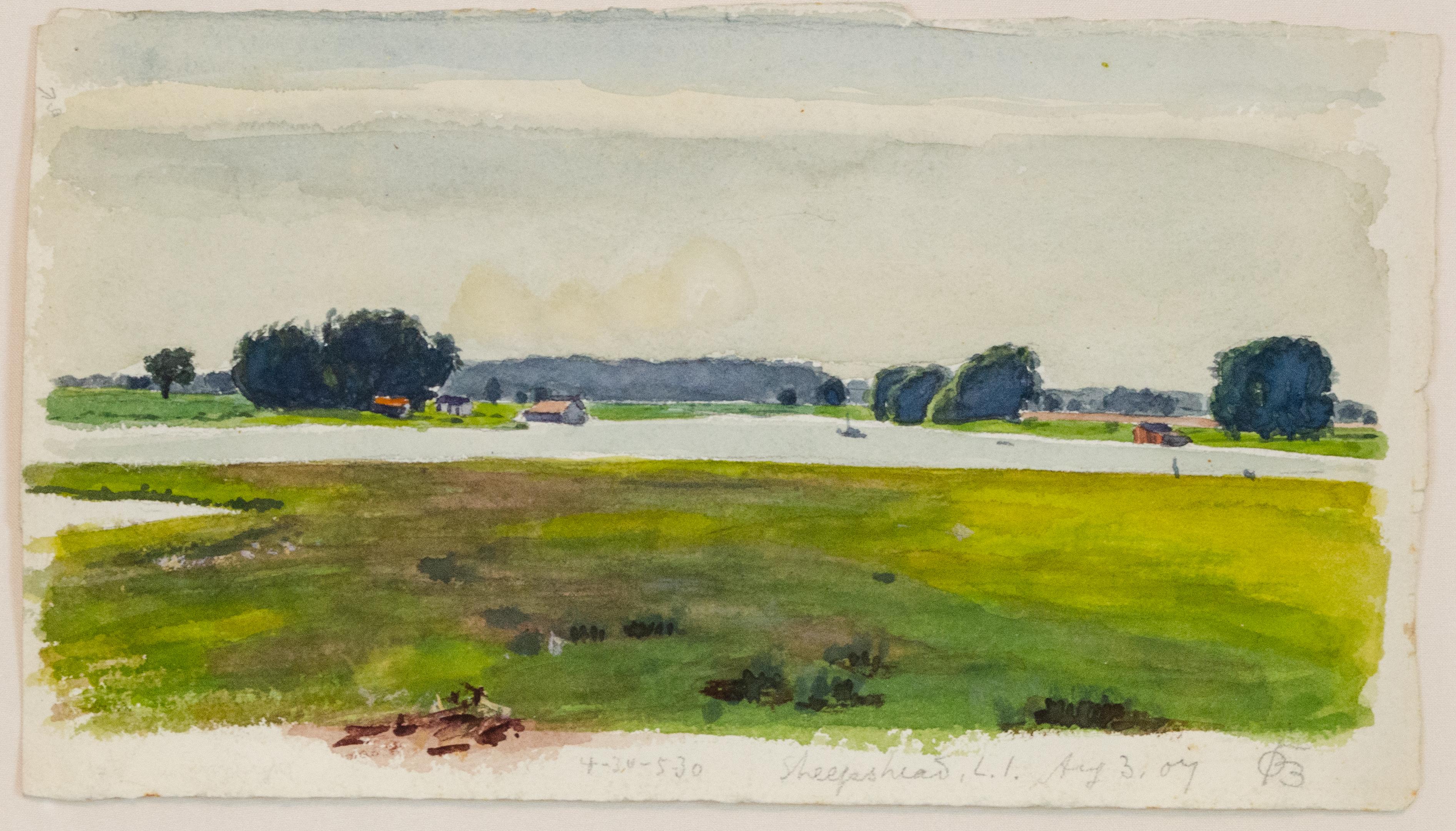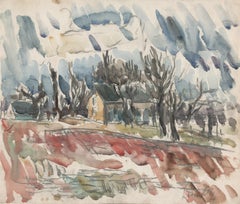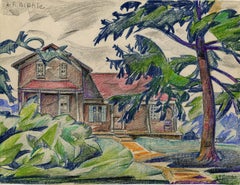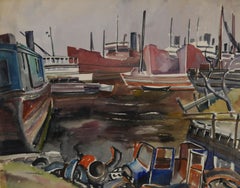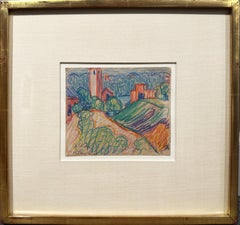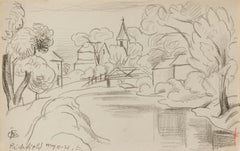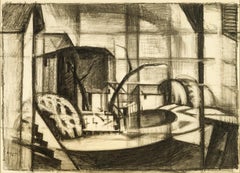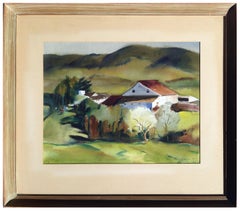Articoli simili a Brookdale, New Jersey
Vuoi altre immagini o video?
Richiedi altre immagini o video al venditore
1 di 7
Oscar Florianus BluemnerBrookdale, New Jersey1922
1922
1479,30 €
Informazioni sull’articolo
Brookdale, New Jersey
Grafite su carta, 1922
Firmato con le iniziali dell'artista a sinistra e datato 1922 (vedi foto).
Annotazione "Brookdale" sul fronte e sul retro del foglio
Condizioni: Eccellente
Incorniciatura d'archivio con 8 strati di tessuto di stracci senza acidi e vetro con filtro UV. Alloggiato in una cornice angolare rifinita a foglie di metallo in stile Marin
Dimensioni della cornice: 15 x 16-3/8 x 3/4 pollici
Dimensioni dell'immagine: 5 x 6 3/4 pollici
Provenienza: Proprietà dell'artista
Per gentile concessione di Wikipedia
Oscar Bluemner (21 giugno 1867 - 12 gennaio 1938), nato Friedrich Julius Oskar Blümner e conosciuto dopo il 1933 come Oscar Florianus Bluemner, era un pittore modernista americano di origine prussiana.
La prima vita
Bluemner nacque come Friedrich Julius Oskar Blümner a Prenzlau, nel Regno di Prussia (oggi Germania), il 21 giugno 1867. Ha studiato pittura e architettura alla Royal School of Art di Berlino.
Architettura
Bluemner si trasferì a Chicago nel 1893 dove lavorò come disegnatore indipendente all'Esposizione Colombiana Mondiale. Dopo l'esposizione, cercò di trovare lavoro a Chicago. Nel 1901 si trasferì a New York City dove non riuscì a trovare un lavoro stabile. Nel 1903 creò il progetto vincente per il Bronx Borough Courthouse di New York, anche se è accreditato a Michael J. Garvin. Lo scandalo che ne scaturì fece cadere il presidente del distretto Louis Haffen per corruzione e frode.
Nel 1908 Bluemner incontrò Alfred Stieglitz, che lo introdusse alle innovazioni artistiche dell'avanguardia europea e americana. Nel 1910, Bluemner decise di dedicarsi a tempo pieno alla pittura piuttosto che all'architettura.
An He espose all'Armory Show del 1913. An He disse che il contributo degli americani non era all'altezza di quello degli europei perché il processo di selezione americano rifletteva rivalità e compromessi piuttosto che il giudizio curatoriale, risultando in una "fusione di esempi antagonisti". Nonostante la partecipazione a diverse mostre, anche personali, per i dieci anni successivi Bluemner non riuscì a vendere molti dipinti e visse con la sua famiglia in condizioni di quasi povertà.
Negli anni '30 ha realizzato dipinti per il Federal Arts Project.
Vita successiva
Dopo la morte della moglie nel 1926, Bluemner si trasferì a South Braintree, nel Massachusetts. Da lì, nel 1932, contribuì con una lettera a un dibattito in corso sul New York Times sulla questione "Che cos'è l'arte americana?". An He ha scritto:
"L'America vende le sue scarpe, le sue macchine, la sua carne in scatola e così via in Europa e in tutto il mondo non perché abbiano uno stile americano o siano avvolte nella bandiera americana, ma semplicemente perché sono le migliori. Così anche i francesi esportano i loro quadri e il controllo delle nascite, mentre i tedeschi esportano crauti e prime donne, perché ognuna di queste cose è la migliore. Oggi, per la qualità, il nazionalismo, come attributo razziale, non significa nulla; la chimica, l'astronomia o l'ingegneria non ammettono da nessuna parte un sapore nazionale, né tantomeno cose più elevate come la religione o la filosofia.
Facciamo, qui, della pittura progressiva e migliore, ognuno come è in grado di fare, e chiediamoci semplicemente: cosa e quando è la pittura, in senso critico? ... Come può il popolo essere d'accordo su cosa sia lo stile americano, se gli stessi pittori, con il loro lavoro, sono in profondo disaccordo su cosa sia la vera pittura! E non c'è, e non c'è mai stato, niente di più spregevole, ridicolo e, per l'arte, disastroso del patriottismo, che nasconde un sottile profitto.
Idealmente, l'arte, pura, è di una sfera e di nessun paese; i primi veri artisti, sempre e ovunque, sono stati importatori o immigrati che hanno portato con sé la luce. El Greco, un immigrato ... sfidò i professori spagnoli ... ; noi, ora, definiamo la sua opera più veramente spagnola di quella dei suoi contemporanei locali. E nello stesso senso, il futuro non mancherà di bollare come peculiarmente americano il nostro lavoro, in cui il pittore vivente, qui, non ha inserito alcun pensiero consapevole della sua provenienza da Hoboken o Kankakee, e ogni considerazione sulla pittura pura e moderna e sulla qualità suprema di cui è capace".
Nel 1935 ha avuto una mostra personale di successo presso la Marie Harriman Gallery di New York. Sul New York Times, Edward Alden Jewell l'ha definita "l'apoteosi" di Bluemner. An He ha scritto:
An He è molto vivo e negli ultimi tempi ha lavorato... con risultati robusti [sic]. Queste ventotto tele portano il titolo generico di "Nuovi dipinti di paesaggio". Questo perché il sig. Blkuemner ritiene che un certo grado di "rappresentazione" sia essenziale se si vogliono trasmettere idee astratte con pieno successo. Tuttavia, l'artista le classifica in modo più completo e preciso come "composizioni per temi di colore". Se volesse, potrebbe anche chiamarle "musica a colori", senza rischiare l'ostracismo che di solito accompagna le escursioni in un campo così rischioso. ... Queste immagini sorprendenti costruiscono armonie e ritmi che di norma dipendono da semplici affermazioni. Qui non troviamo nessuno dei toni e delle sfumature che altri artisti hanno utilizzato per proiettare la musica visiva. Bluemner si affida per il suo effetto ad accordi semplici e risonanti. Sebbene siano presenti modulazioni di tono, queste sembrano di secondaria importanza nel suo schema. C'è decisamente qualcosa in questo nuovo stile audace ed esclamativo.
Bluemner morì suicida il 12 gennaio 1938.
Eredità
L'Università di Stetson possiede più di 1.000 opere di Oscar Bluemner lasciate in eredità nel 1997 dalla figlia Vera Bluemner Kouba. Nel 2009 è stato inaugurato l'Homer and Dolly Hand Art Center di Stetson con la missione principale di ospitare uno spazio espositivo per la Collezione Kouba. Spesso trascurato in vita, Bluemner è oggi ampiamente riconosciuto come uno dei protagonisti della creazione del Modernismo artistico americano, insieme a colleghi più noti come Georgia O'Keeffe e John Marin.
Nel 2013, il Montclair Art Museum del New Jersey ha presentato una mostra di opere di Bluemner che ritraggono i paesaggi e le aree industriali di Paterson, dipinte tra il 1910 e il 1917 e provenienti dal patrimonio di Stetson. Si celebrava il centenario dello sciopero della seta di Paterson, che aveva ispirato la sua politica.
Un dipinto a olio di Bluemner, Illusione di una prateria, New Jersey (Red Farm at Pochuck) (1915) è stato venduto da Christie's, New York, per 5.346.500 dollari il 30 novembre 2011.
- Creatore:Oscar Florianus Bluemner (1867-1938, Americano)
- Anno di creazione:1922
- Dimensioni:Altezza: 12,7 cm (5 in)Larghezza: 17,15 cm (6,75 in)
- Tecnica:
- Movimento e stile:
- Periodo:
- Condizioni:
- Località della galleria:Fairlawn, OH
- Numero di riferimento:Venditore: FA37421stDibs: LU14016412952
Informazioni sul venditore
5,0
Venditore riconosciuto
Questi venditori prestigiosi sono leader del settore e rappresentano il massimo in termini di qualità e design.
Venditore Platino
Venditori Premium con valutazione 4.7+ e tempi di risposta entro 24 ore
Fondazione nel 1978
Venditore 1stDibs dal 2013
809 vendite su 1stDibs
Tempo di risposta standard: <1 ora
Associazioni
International Fine Print Dealers Association
- SpedizioneRecupero del preventivo…Spedizione da: Akron, OH
- Politica di reso
Alcune parti di questa pagina sono state tradotte automaticamente. 1stDibs non può garantire che le traduzioni siano corrette. L’inglese è la lingua predefinita del sito.
Garanzia di autenticità
Nell’improbabile caso in cui si verifichi un problema con l’autenticità di un articolo, contattaci entro un anno per ottenere un rimborso completo. DettagliGaranzia di rimborso
Se il tuo articolo non corrisponde alla descrizione, è danneggiato durante il trasporto o non arriva, contattaci entro 7 giorni per un rimborso completo. DettagliAnnullamento entro 24 ore
Hai un periodo di tolleranza di 24 ore per annullare il tuo acquisto, senza necessità di fornire spiegazioni.Venditori professionali selezionati
I nostri venditori di livello internazionale devono aderire a rigorosi standard di servizio e qualità, garantendo l’integrità delle inserzioni.Garanzia miglior prezzo
Se scopri che un venditore ha pubblicato altrove lo stesso articolo a un prezzo più basso, applicheremo lo stesso prezzo.Consegna globale affidabile
La nostra rete di vettori leader del settore offre opzioni di spedizione specializzate in tutto il mondo, inclusa la consegna personalizzata.Altro da questo venditore
Mostra tuttoPaesaggio con edifici e alberi
Di Leon Kelly
Paesaggio con edifici e alberi
Acquerello su carta, 1930 ca.
Firmato a matita in basso a destra (vedi foto)
Provenienza: Proprietà dell'artista
Condizioni: Eccellente
Dimensioni del ...
Categoria
Anni 1930, American Modern, Disegni e acquarelli (paesaggio)
Materiali
Acquarello
York Road vicino alla Rt. 82
Di August F. Biehle
York Road vicino alla Rt. 82
Firmato a matita in alto a sinistra; firmato nuovamente a matita verde in basso a destra.
rafite e pastello colorato su carta, montato su carta
c. 1950'...
Categoria
Inizio XX secolo, Fauvismo, Disegni e acquarelli (paesaggio)
Materiali
Pastelli, Grafite
Omaggio a Morandi
Di Phyllis Sloane
Omaggio a Morandi
Acquerello, 1990 circa
Firmato in basso a destra: Sloane
Un importante acquerello dell'artista in dimensioni da mostra.
Acquistata dalla Cleveland Clinic, non più a...
Categoria
Anni 1990, Contemporaneo, Disegni e acquarelli (natura morta)
Materiali
Acquarello
Staten Island
Di Robert Hallowell
Staten Island
Acquerello su carta, 1928 circa
Firmato con il timbro della tenuta in basso a sinistra
Dimensioni del foglio: 19 1/8 x 23 7/8 pollici
Titolato sul verso
Fa parte di una...
Categoria
Anni 1920, American Modern, Disegni e acquarelli (paesaggio)
Materiali
Acquarello
Cortile II
Di Robert Kipniss
Cortile II
Litografia, 1972
Firmato in basso a destra
Firmato in basso a destra
Annotato: Prova di stampa
Riferimento: Karl Lunde 58
Un'impronta è presente nella collezione dell'Art ...
Categoria
Anni 1970, Realismo americano, Stampe (paesaggio)
Materiali
Litografia
Paesaggio primaverile con casa e figura
Di Louis Oscar Griffith
Paesaggio primaverile con casa e figura
Un acquerello preliminare per un'acquatinta a colori, illustrato al tratto, titolo sconosciuto
Firmato in basso a sinistra in stampatello (ved...
Categoria
Anni 1920, Impressionismo americano, Disegni e acquarelli (paesaggio)
Materiali
Acquarello
Ti potrebbe interessare anche
Belleville, NJ
Di Oscar Bluemner
Il pittore modernista Oscar Bluemner nacque ad Hanover, in Germania, nel 1867. Da giovane ha seguito la carriera di architetto del padre e del nonno. All'inizio degli anni '80 del XI...
Categoria
Inizio XX secolo, American Modern, Disegni e acquarelli (paesaggio)
Materiali
Carta, Matita carboncino
Richfield
Di Oscar Bluemner
Eccezionale e raro schizzo del modernista americano Oscar Bluemner. Condizioni molto, molto buone. Incorniciato splendidamente.
Categoria
Inizio XX secolo, American Modern, Disegni e acquarelli (paesaggio)
Materiali
Matita carboncino
Studio per Old Canal, Red and Blue (Rockaway, Morris Canal)
Di Oscar Florianus Bluemner
Oscar Bluemner era un tedesco e un americano, un architetto di formazione che leggeva voracemente la teoria dell'arte, la teoria del colore e la filosofia, uno scrittore di critica d...
Categoria
XX secolo, American Modern, Disegni e acquarelli astratti
Materiali
Carta, Carboncino
Paesaggio della casa di campagna di metà secolo
Di Rene Weaver
Vivace acquerello di una casa di campagna e di un boschetto di alberi in un paesaggio rurale di dolci colline verdi, con animali da fattoria in lontananza, opera dell'artista califor...
Categoria
Anni 1940, Impressionismo americano, Disegni e acquarelli (paesaggio)
Materiali
Carta, Acquarello
"East Providence" Oscar Bluemner, Disegno di East Providence, Architettonico
Di Oscar Bluemner
Oscar Bluemner
East Providence, 21 dicembre 1926
Con l'indicazione del luogo e la data, in alto a sinistra "East Providence 21-26 dicembre".
Pastello nero su carta
5 x 7 7/8 pollici
...
Categoria
Inizio XX secolo, Moderno, Disegni e acquarelli (paesaggio)
Materiali
Pastelli
"Sheepshead, Brooklyn, Long Island" Oscar Bluemner, acquerello modernista
Di Oscar Bluemner
Oscar Bluemner
Sheepshead, Long Island, 1907
Firmato con le iniziali congiunte dell'artista "OB" e datato "4-30 - 5 - 30" / "Aug 3, 07".
Acquerello su carta
6 x 10 pollici
Provenien...
Categoria
Inizio Novecento, American Modern, Disegni e acquarelli (paesaggio)
Materiali
Carta, Acquarello
